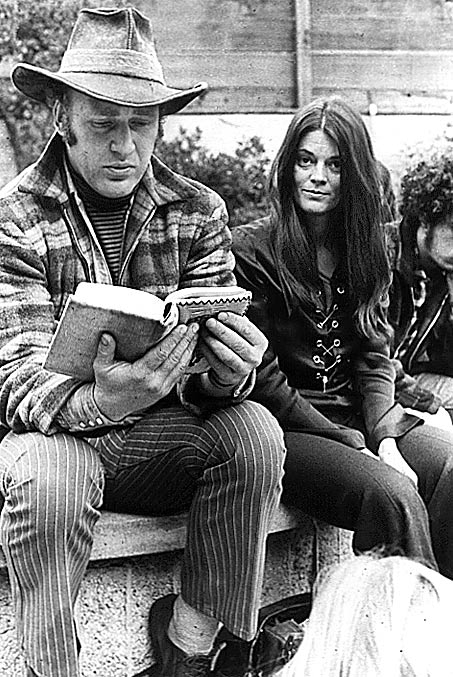From 1952-54, Collier’s published a series of articles under the exclamatory rubric “Man Will Conquer Space Soon!” In the final piece, “Can We Get to Mars?” Wernher von Braun, erstwhile Nazi, and Cornelius Ryan, the Irish journalist who penned The Longest Day and A Bridge Too Far, examined the obstacles to be overcome if we were to visit our inhospitable neighbor. A passage about the profound psychological challenges of passing time in space:
When Men Live Too Close Together
During that time they will live, work and perform all bodily functions within the cramped con- fines of a rocket-ship cabin or a pressurized—and probably mobile—Martian dwelling. (I believe the first men to visit Mars will take along inflatable, spherical cabins, perhaps 30 feet across, which can be mounted atop tractor chassis.) Even with plenty of oxygen, the atmosphere in those living quarters is sure to pose a problem.
Within the small cabins, the expedition members will wash, perform personal functions, sweat, cough, cook, create garbage. Every one of those activities will feed poisons into the synthetic air—just as they do within the earth’s atmosphere.
No less than 29 toxic agents are generated during the daily routine of the average American household. Some of them are body wastes, others come from cooking. When you fry an egg, the burned fat releases a potent irritant called acrolein. Its effect is negligible on earth because the amount is so small that it’s almost instantly dissipated in the air. But that microscopic quantity of acrolein in the personnel quarters of a Mars expedition could prove dangerous; unless there was some way to remove it from the atmosphere it would be circulated again and again through the air-conditioning system.
Besides the poisons resulting from cooking and the like, the engineering equipment—lubricants, hydraulic fluids, plastics, the metals in the vehicles—will give off vapors which could contaminate the atmosphere.
What can be done about this problem? No one has all the answers right now, but there’s little doubt that by using chemical filters, and by cooling and washing the air as it passes through the air-conditioning apparatus, the synthetic atmosphere can be made safe to live in.
Besides removing the impurities from the man-made air, it may be necessary to add a few. Man has lived so long with the impurities in the earth’s atmosphere that no one knows whether he can exist without them. By the time of the Mars expedition, the scientists may decide to add traces of dust, smoke and oil to the synthetic air—and possibly iodine and salt as well.
I am convinced that we have, or will acquire, the basic knowledge to solve all the physical problems of a flight to Mars. But how about the psychological problem? Can a man retain his sanity while cooped up with many other men in a crowded area, perhaps twice the length of your living room, for more than thirty months?
Share a small room with a dozen people completely cut off from the outside world. In a few weeks the irritations begin to pile up. At the end of a few months, particularly if the occupants of the room are chosen haphazardly, someone is likely to go berserk. Little mannerisms—the way a man cracks his knuckles, blows his nose, the way he grins, talks or gestures—create tension and hatred which could lead to murder.
Imagine yourself in a space ship millions of miles from earth. You see the same people every day. The earth, with all it means to you, is just another bright star in the heavens; you aren’t sure you’ll ever get back to it. Every noise about the rocket ship suggests a breakdown, every crash a meteor collision. If somebody docs crack, you can’t call off the expedition and return to earth. You’ll have to take him with you.
The psychological problem probably will be at its worst during the two eight-month travel periods. On Mars, there will be plenty to do, plenty to see. To be sure, there will be certain problems on the planet, too. There will be considerable confinement. The scenery is likely to be grindingly monotonous. The threat of danger from some unknown source will hang over the explorers constantly. So will the knowledge that an extremely complicated process, subject to possible breakdown, will be required to get them started on their way back home. Still,
Columbus’ crew at sea faced much the same problems the explorers will face on Mars; the fifteenth-century sailors felt the psychological tension, but no one went mad.
But Columbus traveled only ten weeks to reach America; certainly his men would never have stood an eight-month voyage. The travelers to Mars will have to, and psychologists undoubtedly will make careful plans to keep up the morale of the voyagers.
The fleet will be in constant radio communication with the earth (there probably will be no television transmission, owing to the great distance). Radio programs will help relieve the boredom, but it’s possible that the broadcasts will be censored before transmission; there’s no way of telling how a man might react, say, to the news that his home town was the center of a flood disaster. Knowing would do him no good—and it might cause him to crack.
Besides radio broadcasts, each ship will be able to receive (and send) radio pictures. There also will be films which can be circulated among the space ships. Reading matter will probably be carried in the form of microfilms to save space. These activities—plus frequent intership visiting, lectures and crew rotations—will help to relieve the monotony.
There is another possibility, seemingly fantastic, but worth mentioning briefly because experimentation already has indicated it may be practical. The nonworking members of a Mars expedition may actually hibernate during part of the long voyage. French doctors have induced a kind of artificial hibernation in certain patients for short periods, in connection with operations for which they will need all their strength (Collier’s, December 11, 1953—”Medicine’s New Offensive Against Shock,” by J. D. Ratcliff). The process involves a lowering of the body temperature, and the subsequent slowing down of all the normal physical processes. On a Mars expedition, such a procedure, over a longer period, would solve much of the psychological problem, would cut sharply into the amount of food required for the trip, and would, if successful, leave the expedition members in superb physical condition for the ordeal of exploring the planet.
Certainly if a Mars expedition were planned for the next 10 or 15 years no one would seriously consider hibernation as a solution for any of the problems of the trip. But we’re talking of a voyage to be made 100 years from now; I believe that if the French experiments bear fruit, hibernation may actually be considered at that time.
Finally, there has been one engineering development which may also simplify both the psychological and physical problems of a Mars voyage. Scientists are on the track of a new fuel, useful only in the vacuum of space, which would be so economical that it would make possible far greater speeds for space journeys. It could be used to shorten the travel time, or to lighten the load of each space ship, or both. Obviously, a four-or-six-month Mars flight would create far fewer psychological hazards than a trip lasting eight months.
In any case, it seems certain that the members of an expedition to Mars will have to be selected with great care. Scientists estimate that only one person in every 6,000 will be qualified, physically, mentally and emotionally, for routine space flight. But can 70 men be found who will have those qualities—and also the scientific background explore Mars? I’m sure of it.•






























